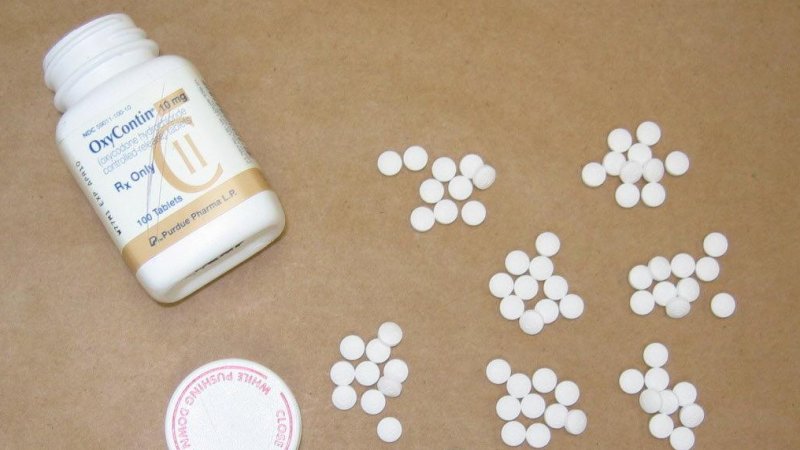Prescription narcotic OxyContin. (Credit U.S. Drug Enforcement Agency)
Fatal overdoses from prescription pain pills increased fivefold among women from 1999 to 2010, the U.S. Centers for Disease Control and Prevention said Tuesday.
The rate among men tripled over the same period, according to the analysis conducted by the CDC. “These are really troubling numbers,” CDC director Tom Frieden told reporters, noting that the deaths are "skyrocketing" at rates "we have never seen before."
The report tracked opioid or narcotic pain relievers, including drugs such as Vicodin (hydrocodone), OxyContin (oxycodone), Opana (oxymorphone), and methadone.
While more men still die each year from prescription painkiller overdoses, at more than 10,000 deaths in 2010, compared with 6,600 women, the rate of increase among women has spiked sharply among women in recent years.
The CDC report found that women are more likely than men to have chronic pain, be prescribed prescription painkillers, be given higher doses, and use them for longer time periods than men.
Women between the ages of 25 and 54 are more likely than other age groups to go to the emergency room from prescription painkiller misuse or abuse, and women ages 45 to 54 have the highest risk of fatal overdose.
Although death data include unintentional overdose or mixing with other medications or substances, prescription painkillers are involved in 1 in 10 suicides among women.
For every woman who dies of a prescription painkiller overdose, 30 go to the emergency room for painkiller misuse or abuse.
The CDC says that deaths and hospitalizations have increased in direct proportion to the boost in supply. Opioid pain relievers quadrupled in sales to pharmacies, hospitals and doctors between 1999 and 2010.
The report also found that women are more likely to engage in "doctor shopping" to obtain prescriptions. And although painkillers were once considered a men's addiction, marketing for the drugs has swung heavily toward women in recent years.
Nearly one-third of people who used these drugs started by taking them for nonmedical reasons. But only five percent got pills from drug dealers or bought them on the Internet. More than 70 percent of prescription drug users first got them from friends or relatives.















